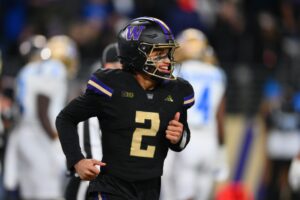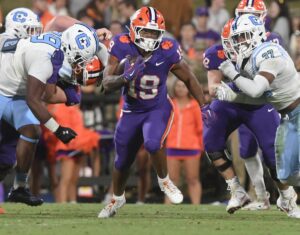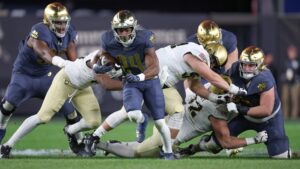Story written by: Travis Knobbe, Maggie Yarnell, & Tony Siracusa
Last week Los Angeles County Superior Court Judge Frederick Shaller issued a final decision in the Todd McNair case. The decision invalidates a “show-cause” penalty levied by the NCAA against former USC assistant Todd McNair. Judge Shaller is one of 489 Superior Court judges in Los Angeles County. For a trial court judge with a relatively small domain, Judge Shaller created a nationwide controversy with his latest ruling. Thrust into the national conversation now is the California lower court versus the authority of the NCAA.
Why? How? What does this mean? Can a lower-level state court judge really interfere with the complex relationship between the NCAA, its conferences, and the member schools? How will the NCAA continue to govern its member institutions with the court’s ruling? We examine those questions here.
Can A California Court Decision Upend The Regulatory Power Of The NCAA?
NCAA Authority
Controversy has followed the NCAA since its inception. Its authority has been challenged by the same college institutions that grant it its power. These challenges include early threats to request input from the United States Attorney General. The NCAA maintained its power in its early years by threatening to remove non-compliant institutions from its membership altogether. As a result, member institutions have woven a nuanced and complex web of relationships. Relationships between the schools, the conferences, and the NCAA itself are in a constant state of flux.
The NCAA gains its power primarily from the institutions that empower it. Alabama, for example, continues to subject itself to the authority of the NCAA both as an individual school and as a member of the Southeastern Conference. Alabama, as an example, expects benefits in return for subjecting itself to the various rules subcommittees the NCAA has formed. In particular, each school and each conference has agreed to govern itself according to a group of rules designed to level the playing field, relatively speaking. If one school, or one conference, can avoid any part of the complex regulatory framework, the quid pro quo behind the arrangement disappears.
The Show-Cause Penalty
Nonetheless, while member institutions reaffirm this exchange regularly, controversy over the NCAA’s power remains. The NCAA “show-cause” penalty has been a heavy point of contention in collegiate athletics for many years. The show-cause penalty is an order handed by the NCAA Committee on Infractions, out against a coach, or group of coaches who are deemed to have violated rules, generally in recruiting. When the order is issued, the penalty imposed on a coach for an infraction follows him/her to the next NCAA institution by which they are employed.
The show-cause order is placed on the coach for a designated period of time. An institution seeking to hire the coach must “show-cause” to the Committee why the institution should not be penalized for hiring the coach until the period ends. The school also has to show the NCAA how they would monitor the coach. Finally, the school is subject to harsher penalties if the coach is found to break NCAA rules while at that school.
The Reality Of A Show-Cause Order
In a 2014 article, USA Today explored the perception versus the reality of the show-cause order. The article explored how such order affects coaches and member institutions. It gave many examples of former coaches that were subject to the show-cause order and still found profitable work. The list included Chip Kelly and Jim Tressel.
Tressel received a five-year show-cause penalty for his knowledge regarding players selling team memorabilia, autographs in exchange for tattoos, and other infractions while he was Head Coach at Ohio State. Now, he is the President at Youngstown State University. Thus, while the show-cause penalty may have curbed his collegiate coaching career, he has landed on his feet.
Chip Kelly’s story is even more intriguing. While the NCAA investigated Kelly for alleged recruiting violations at Oregon, Kelly moved on to coach in the NFL for the Philadelphia Eagles. Now, he is the head coach for the UCLA Bruins.
While the NCAA show-cause order is not always a kiss of death for college coaches, Kelly was the first Division I head football coach to land another head coaching job after receiving a show-cause. The fact that the show-cause penalty creates such a high barrier, however, is where the NCAA’s authority causes direct tension with the overriding legal principles across the United States.
Tension Between the NCAA’s Authority and American Legal Principles
The United States’ legal framework, complicated as it may be at times, finds general agreement among many of its states on one principle. Courts generally disfavor any agreements, rules, or regulations that restrict a free citizen from finding suitable work.
Based on these principles, the show-cause order causes a direct tension between the American legal framework and the NCAA’s regulatory authority. Since the actual effect of a show-cause penalty in all but rare instances is the prohibition of future employment in the same industry, courts asked to review the penalty must consider whether it is fair under our legal system to impose such a steep penalty on coaches. The fact that the NCAA imposes the penalty but does not employ the coaches injects another layer of complexity into the question.
The Issue Takes Front and Center
Todd McNair
Todd McNair was running backs coach at USC under Head Coach Pete Carroll. Many will recall one prominent running back McNair coached: Reggie Bush. After an investigation into improper benefits allegedly given to Reggie Bush, the NCAA found that McNair provided false information to the NCAA and covered up rules violations. As a result of such conduct, the NCAA issued a one-year show-cause penalty in 2010. After the penalty was issued, USC let McNair’s contract expire without renewal. McNair has not found another assistant coaching job since.

The Lawsuit
After the show-cause penalty was issued, McNair filed a four-count lawsuit against the NCAA. He alleged that the NCAA defamed him in its ruling. Further, he alleged that the NCAA’s show-cause penalty was legally unenforceable. After a complex, winding history featuring various appeals, a jury found in May of this year that the NCAA did not defame McNair. The court issued a preliminary finding in August, however, that the NCAA’s show-cause penalty was, in fact, unenforceable under California law. Judge Shaller finalized that ruling last week, thrusting the California lower court versus NCAA authority into national conversation. Absent any post-ruling motions, this is the final order in the long case instituted by McNair.
The Judge And His Ruling
Judge Frederick Shaller is one of nearly 500 judges in the Los Angeles County Superior Court system. Under California’s legal system, the state is broken into a number of regions and districts. Each district has its own Superior Court. The Superior Court is the trial court in California. It is responsible for general civil and criminal cases from a breach of an agreement to any non-felony criminal case, to traffic cases and everything in between. Judge Shaller, ironically, is a USC graduate. The NCAA moved to have Shaller recuse himself in May and he declined the motion.

In his decision, Shaller ruled that the NCAA show-cause order constituted an “unlawful restraint” on McNair pursuing a lawful profession. Shaller wrote, “McNair’s ability to practice his profession as a college football coach has been restricted, if not preempted, not only in Los Angeles, but in every state in the country.” Shaller continued that his decision would “allow NCAA and member schools to conform their conduct to the law and prevent future litigation.”
Commentary From The Pac-12 And NCAA
Prior to Shaller’s final decision, the NCAA filed a declaration from Pac-12 Commissioner Larry Scott. In the declaration, Scott said, “If California law prevents institutions in that state from honoring [commitments made to the conference and NCAA], it is hard to see how the Pac-12’s Member Universities in California could continue to meet the requirements of NCAA membership.” After the ruling, the NCAA expressed its disagreement with the decision, stating that it would “explore all avenues for relief to ensure that NCAA member schools in California can continue to abide by the same rules as the rest of the NCAA’s membership.” Shaller dismissed the statement, saying it was speculative and did not allow it into evidence.
Is There Cause For Concern?
USC, the Pac-12, and the NCAA have built complex relationships with each other. The quid pro quo for the NCAA’s authority is that the rules that bind one school bind them all with equal force. As a result, the NCAA and the Pac-12 are predictably concerned that Shaller’s ruling could upset that delicate balance.
Shaller’s decision will likely have little to no net immediate impact on the NCAA or its member institutions. An appeal of Judge Shaller’s ruling is likely. The appeal process could take several years to play out. In the meantime, it is likely that the NCAA will request a stay of Shaller’s order. The NCAA will ask that the order be considered unenforceable until a final appeals court rules on Shaller’s decision. In the California system, the next steps would be the state court of appeals or even the state supreme court. Depending upon those outcomes, the NCAA, as a national institution, would conceivably consider taking it to federal court.
Complicated Relationships Make For Appeal
For a number of reasons, Shaller’s decision is likely to be overturned on appeal. Shaller did not seem to account for the complex relationships that exists. It is the basis for the NCAA to function. The relationships between the NCAA, the conferences, the schools, and the coaching staff are bilateral. But they also entered into voluntarily by the schools and their employees, including coaches. As a result, every member of a coaching staff, in agreeing to the employment, is also agreeing to discipline by the school, the conference, and/or the NCAA should rules be violated.
The NCAA opens itself up to criticism on a regular basis. It’s handling of sanctions for schools and players under its supervision is often sloppy and uneven. However, much like a national collective bargaining agreement for a sports union, the abidance is entered into as a whole, not in state-by-state segments. Shaller’s ruling does not adequately take into account the impact on the whole. It should fairly spotlight how far the legal world should be able to enter into the realm of governing national collegiate athletics. The answer to that question is surely up for debate.
Editors’ Note: Maggie Yarnell is a graduate of Penn State Law and is a writer for Last Word on College Football. Travis Knobbe has a degree from the West Virginia University College of Law, and is also a writer for LWOCFB. Tony Siracusa has a journalism degree and is managing editor of Last Word on College Football.






